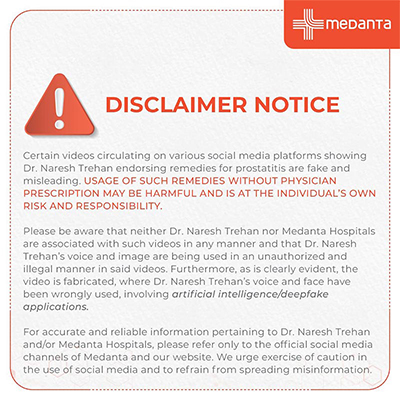5 Common Newborn (Neonatal) Health Problems and How to Deal With Them

You are excited to welcome your newborn baby to the world. Along with this excitement, your responsibility and vigilance as parents are to ensure your baby's health and well-being. The neonatal or newborn period lasts for the first 28 days of life and is critical for a newborn. During this period, babies are usually more vulnerable and might experience several minor or severe newborn health issues, some of which require immediate attention.
Being familiar with the common health problems a newborn can experience may help you provide them with immediate and better care. This article will discuss some of the most common newborn problems and how to recognise and manage them.
What Are the Most Common Newborn Health Conditions?
Health problems in newborns (neonates) can manifest during pregnancy, during labour, at the time of birth or soon after birth. Common issues at this time are low sugars, jaundice, and infections. This section outlines some of the most common health problems of newborns, their symptoms for recognition, and management tips:
1. Respiratory Distress Syndrome (RDS)
Respiratory distress syndrome, or RDS, occurs most frequently in premature babies whose lungs have not fully developed. These babies develop breathing difficulty soon after birth because of a surfactant deficiency. Approximately 10% of babies need help breathing at delivery time.
Usually, the fetus's lungs start producing surfactant, a substance that helps keep the lung inflated, at around 24 weeks of pregnancy, and by the 34th and 36th week, there is enough surfactant in their lungs to help the baby breathe. However, premature baby fails to produce enough surfactant, which leads to breathing difficulties. Most babies with RDS would be transferred to the NICU by a doctor/nurse attending the delivery. However, some cases may present after a few hours.
Symptoms:
Laboured or rapid breathing
Grunting sounds
Retractions
Flaring of nostrils
Bluish tint around the lips
Management: Most babies need some form of breathing support; some may need the instillation of artificial surfactant in the lungs and breathing support.
2. Hypoglycemia
Hypoglycemia, or low blood sugar, is common in premature babies, low birth weight babies, babies born to diabetic mothers or those who experienced stress during delivery. Babies, especially preterm babies, find it difficult to feed. Since they do not have adequate stores of glucose, they are unable to maintain their blood glucose levels, resulting in low sugar levels.
Symptoms:
Sweating too much
Tremors
Low body temperature
Being irritable
Not eating properly
Management: Management depends on the baby's condition and blood glucose levels. If the baby is well and the blood sugar is not very low, then extra feeding may be sufficient. However, if the baby is sick or the sugar levels are very low, then intravenous glucose may be administered initially to stabilise the baby.
3. Sepsis
Sepsis is one of the common problems in newborns. This medical condition is characterised by a blood-stream infection due to bacteria, viruses or fungi. Neonates are particularly susceptible due to their immature immune systems. When diagnosed with sepsis, babies can become sick very rapidly with shock, multiple organ failure and even death.
Symptoms:
Poor feeding
Abnormal body temperature (either fever or hypothermia)
Fast breathing or shortness of breath
Fast or slow heart rate
Jaundice
Reduced activity
Seizures
Management: Early diagnosis and management are essential. Doctors would admit the baby to the NICU for close monitoring, antibiotics, IV fluids, breathing support, and medications to support the heart and blood pressure if required. In addition, they might prescribe IV antibiotics, antiviral medication, and blood pressure or heart medications.
4. Jaundice
Jaundice is reported to occur in around 60% of full-term and 80% of preterm babies within the first week after delivery. Newborn babies suffer from this common newborn condition, which is usually due to delayed maturation of some of the liver enzymes.
Symptoms:
Yellowing of skin and eyes (most common)
Poor feeding
Lethargy
Dark urine
Pale stools
Management: Mild jaundice often doesn't need any treatment, but babies with severe jaundice will require phototherapy (light therapy) to help remove the bilirubin from their bodies. A blood exchange transfusion might be required in rare cases where bilirubin levels are very high.
5. Birth Asphyxia
Birth asphyxia occurs when a newborn baby's brain and other organs do not receive enough oxygen and nutrients before, during, or immediately after birth. Without oxygen and nutrients, cells fail to function properly, and waste products accumulate in them, potentially damaging the brain and organs.
Symptoms:
Weak or absent crying or breathing
Abnormal muscle tone
Low heart rate
Weak reflexes
Pale or bluish skin colour
Amniotic fluid stained with first stool
Seizures
Management: If your baby has birth asphyxia, they are provided breathing support to restore normal breathing and oxygen levels. Some babies would require therapeutic hypothermia (cooling therapy) to prevent or reduce brain injury, medicines to control blood pressure and seizures, IV nutrition, or kidney support with dialysis.
Final Remarks
Infancy is a delicate phase for any newborn. Still, some babies transition smoothly while others face the above-discussed newborn health issues and require attentive care and intervention.
If you're concerned about your newborn baby's health, then consult an expert paediatrician at a super specialty hospital as soon as possible! Take action today and prevent any further complications from arising.
FAQs
1. What are three common newborn health disorders?
Three common newborn health disorders are prematurity, low birth weight, and jaundice.
2. What are the symptoms that I should look out for in my newborn’s health?
Look for signs like difficulty breathing, persistent crying, fever, or lethargy. If you notice any of these symptoms, consult a doctor immediately.
3. What are the risks to a newborn’s health?
Risks to a newborn baby’s health include low birth weight, infections, and birth complications.
4. What is the most common newborn health complication?
The most common newborn health complication is jaundice.
5. What is neonatal or newborn pneumonia?
Neonatal pneumonia is an infection of the lungs that occurs in newborns.
References
1. Ansong-Assoku, B., Shah, S. D., Adnan, M., & Ankola, P. A. (2024, February 12). Neonatal jaundice. StatPearls - NCBI Bookshelf. https://www.ncbi.nlm.nih.gov/books/NBK532930/
2. Pathirana, J., Muñoz, F. M., Abbing-Karahagopian, V., Bhat, N., Harris, T., Kapoor, A., Keene, D. L., Mangili, A., Padula, M. A., Pande, S. L., Pool, V., Pourmalek, F., Varricchio, F., Kochhar, S., & Cutland, C. L. (2016). Neonatal death: Case definition & guidelines for data collection, analysis, and presentation of immunization safety data. Vaccine, 34(49), 6027–6037. https://doi.org/10.1016/j.vaccine.2016.03.040
3. Raymond, S. L., Stortz, J. A., Mira, J. C., Larson, S. D., Wynn, J. L., & Moldawer, L. L. (2017). Immunological defects in neonatal sepsis and potential therapeutic approaches. Frontiers in Pediatrics, 5. https://doi.org/10.3389/fped.2017.00014
4. Rehman, S., & Bacha, D. (2023, August 14). Embryology, pulmonary. StatPearls - NCBI Bookshelf. https://www.ncbi.nlm.nih.gov/books/NBK544372/#:~:text=Pulmonary%20surfactant%20production%20begins%20at,those%20born%20at%2024%20weeks.
5. Snyder, C. M., & Chandel, N. S. (2009). Mitochondrial regulation of cell survival and death during Low-Oxygen conditions. Antioxidants and Redox Signaling, 11(11), 2673–2683. https://doi.org/10.1089/ars.2009.2730
6. Wall, S. N., Lee, A. C., Niermeyer, S., English, M., Keenan, W. J., Carlo, W., Bhutta, Z. A., Bang, A., Narayanan, I., Ariawan, I., & Lawn, J. E. (2009). Neonatal resuscitation in low-resource settings: What, who, and how to overcome challenges to scale up? International Journal of Gynecology & Obstetrics, 107(Supplement), S47–S64. https://doi.org/10.1016/j.ijgo.2009.07.013
7. Chawanpaiboon, S., Titapant, V., & Pooliam, J. (2024). Neonatal complications and risk factors associated with assisted vaginal delivery. Scientific Reports, 14(1). https://doi.org/10.1038/s41598-024-62703-x






